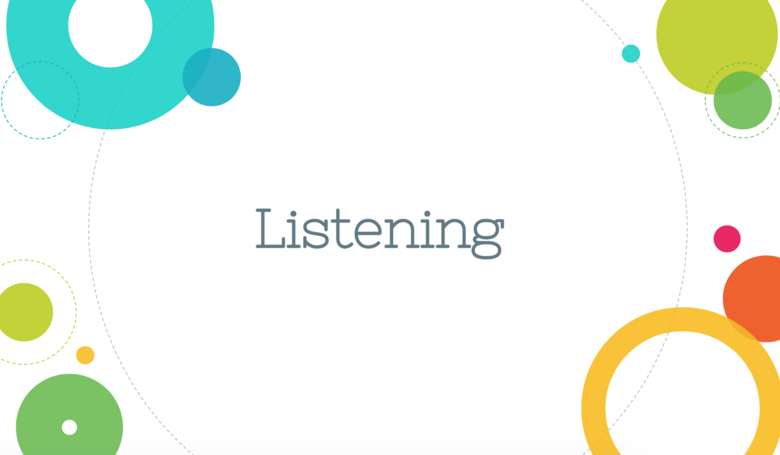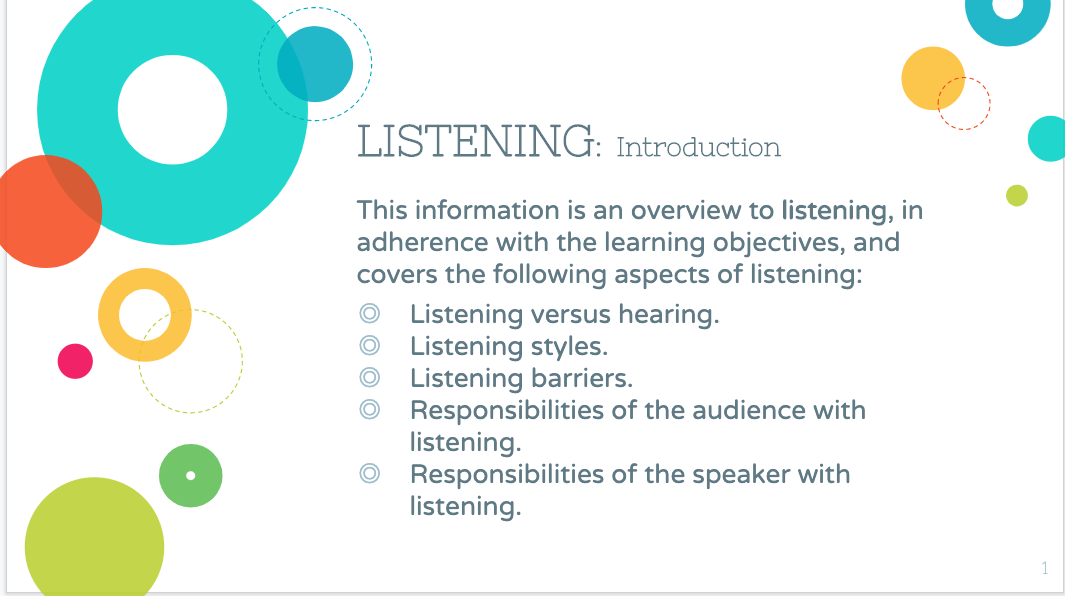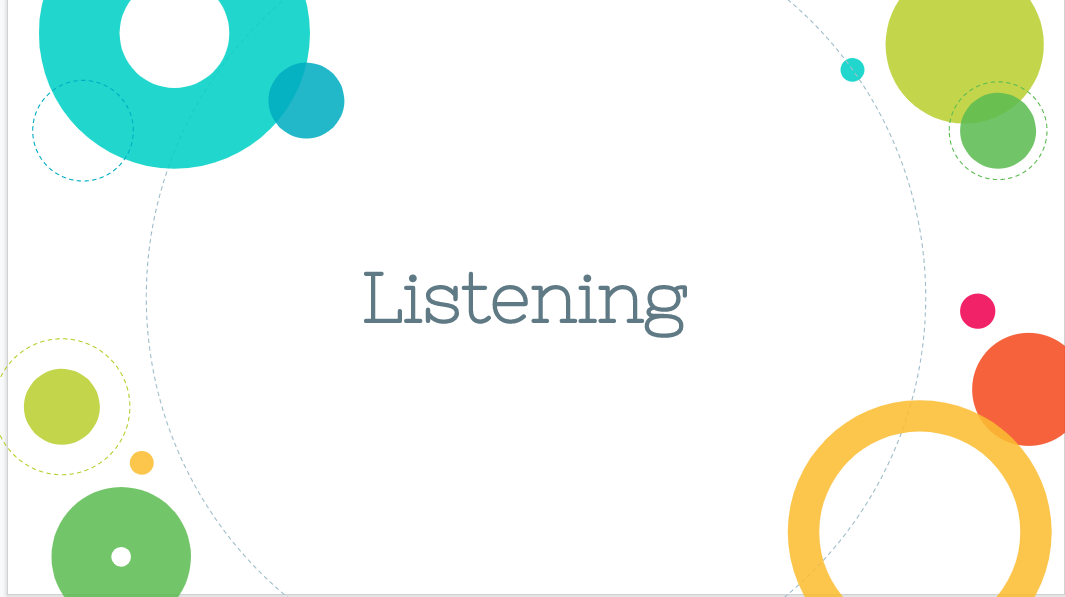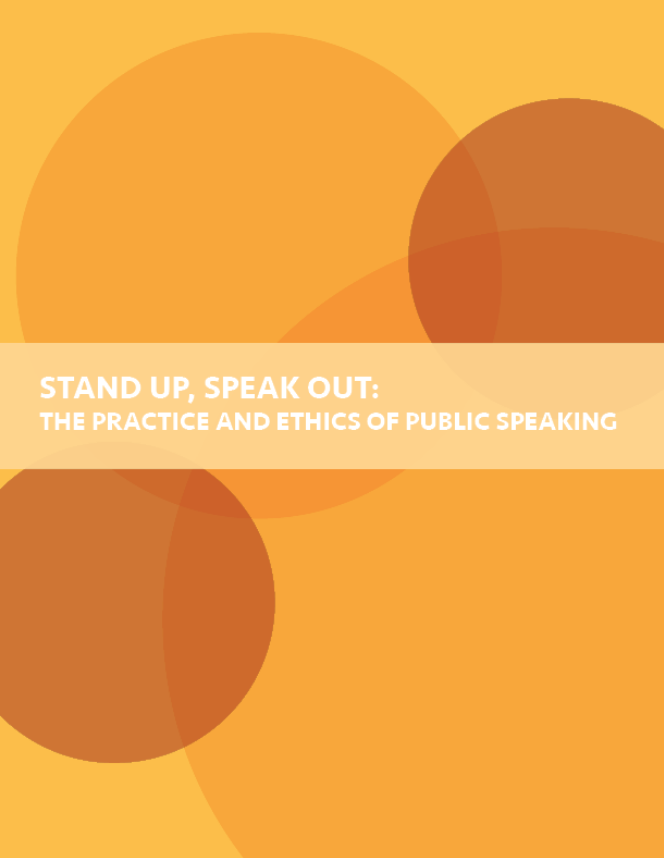Listening Resources

Overview
This educational lesson focuses on listening. Two open network textbooks (ONT) covering listening content are available at no cost: Stand up, Speak Out: The Practice and Ethics of Public Speaking is the recommended textbook and Exploring Public Speaking (3rd ed.) is the supplemental textbook. In Stand up, Speak Out, the listening information is found in Chapter 4. In Exploring Public Speaking, listening information is found as a partial mention in Chapter 2. The learning objectives are addressed in the materials provided: styles of listening, listening barriers, responsibilities of the audience as listeners, responsibilities of the speaker to help audience listen and remove barriers, and critiquing of speeches. Key terms: listening, hearing, people-oriented listener, action-oriented listener, content-oriented listener, time-oriented listener, comprehensive listening, empathetic listening, appreciative listening, critical listening, noise, physical noise, physiological noise, psychological noise, semantic noise, confirmation bias, planned redundancy.
Learning Objectives
- Style of listening
- Listening barriers
- Responsibilities of the audience as listeners
- Responsibilities of speaker to help audience listen and remove barriers
- Critiquing speeches
(This Module meets the TAG/OCM 013 for a Public Speaking Course; Learning Outcome 5)
Recommended Textbook Resources
Stand up, Speak Out: The Practice and Ethics of Public Speaking – Chapter 4
This textbook has a comprehensive chapter on LISTENING, including styles of listening, listening barriers, and improvement techniques for listening skills. These all tie directly to the learning objections. This textbook is available online at no cost to the reader.
Stand up, Speak Out: The Practice and Ethics of Public Speaking – Chapter 4
This textbook has a comprehensive chapter on LISTENING, including styles of listening, listening barriers, and improvement techniques for listening skills. These all tie directly to the learning objections. This textbook is available online at no cost to the reader.
Supplemental Content/Alternative Resources
Alternative Textbook Resource
Exploring Public Speaking (3rd ed.) – Chapter 2, pages 36-41 (partial mention)
This textbook has a brief portion of a chapter dedicated to LISTENING, overviewing styles of listening, listening barriers, and improvement techniques for listening skills. These all tie directly to the learning objectives. This textbook is available online at no cost to the reader.
Video Resource
How to Speak In Public to Make People Listen to You
This source gives a “top 10” list of ways to encourage an audience to listen to a speech.
Document Resource
The Art of Listening
This source offers a unique document, including a recommendation of seven laws to better listening, as well as some gender analysis of listening skills.
PowerPoint Slides

Direct Link to Google Slides
Copy Presentation to "My Google Drive"
Force a Download of PPTx (PowerPoint) File
Topic Application Section
An Experience in Listening
This classroom activity is an exercise in listening skills. Time needed is variable, and there are no materials required. Instructions: Divide the class into small groups of 3-5 students. Have each group select a hotly contested topic, such as abortion, capital punishment, etc. One member of the group begins by sharing an opinion on the topic (suggestion to set time limit per speaker prior to exercise, variable). While the first student is sharing the opinion, the other members of the group are using listening skills to retain information. After the first student’s opinion is shared, the next student in the group shares an opinion on the same topic, but must first summarize the previous student’s opinion. No new information can be given until the first speaker is satisfied by the summary of the student. Once the first speaker agrees to the second speaker’s summary, then new opinion is shared. These steps are repeated until everyone has had the opportunity to listen, summarize, and share an opinion. Debriefing: While this exercise might seem easy, the challenge is in listening to opinion carefully, in order to summarize it, prior to sharing one’s own opinion. The learning objective of listening barriers is addressed in this exercise, as well as responsibilities of the audience as listeners.
End of Section Review
Summary
This educational lesson focused on listening. There are five main objectives met through comprehension of this material. First off, there is an emphasis on the differences between hearing and listening, with the power to listen being focused, voluntary, and intentional, while hearing is accidental, involuntary, and effortless. Secondly, the styles of listening were shared, in terms of a speaking-event orientation: people-oriented listener, action-oriented listener, content-oriented listener, and time-oriented listener. Then, the styles of listening were also shared, in terms of engagement: comprehensive, empathetic, appreciative, and critical listening. Thirdly, listening barriers were described in a variety of ways, summarized as noise, distraction, and bias. The listening barriers of noise and distraction can be further defined in four categories: physical noise, physiological noise, psychological noise, and semantic noise. And, listening bias can be further described as confirmation bias. Fourthly, the audience was reminded that it has a responsibility to listening, following a sequence of steps: receiving, understanding, remembering, evaluation, and responding. Fifthly, the speaker has a responsibility to make listening audience-friendly, using techniques such as organizing, labeling facts versus opinion, and relating known concepts to new concepts, as well as using planned redundancy to reinforce information to listeners. All of the listening content shared in the materials provided can be related to the ability to effectively critique a speech, with the speaker completing his responsibility by providing an audience-friendly format and delivery, in order for the listener to have the opportunity to effectively listen.
Key Terms
- Listening
- Hearing
- People-oriented Listener
- Action-oriented Listener
- Content-oriented Listener
- Time-oriented Listener
- Comprehensive Listening
- Empathetic Listening
- Appreciative Listening
- Critical Listening
- Noise
- Physical Noise
- Physiological Noise
- Psychological Noise
- Semantic Noise
- Planned Redundancy
- Confirmation Bias
Review Questions
After reviewing this section, you should be able to answer the following questions:
- What is the difference between hearing and listening?
- What are the four styles of listening in terms of speaking event orientation?
- What are the four styles of listening in terms of engagement?
- What are three examples of barriers to listening?
- What are four types of noise?
- What ways can a speaker demonstrate his responsibility to his listeners by being audience-friendly?
- What ways can audience members demonstrate their responsibility to listen effectively to the speaker?
Quesitons for Critical Thought and Discussion
- How would you rank the following four styles of listening—comprehensive, empathetic, appreciative, and critical listening—from easiest to most effort required to be an effective listener? Explain the reason for your rankings.
- How could you use all five sequence steps of listening—receiving, understanding, remembering, evaluation, and responding—by sharing an example in your daily life?
- Given the need to vote for a candidate for political office based upon a speech given by the candidate, what could be the consequences of being a “lazy” listener?
- Which barriers to listening can be alleviated by preparation before a listening session?
- What techniques would you use to improve your own listening skills during a professor’s lecture?

